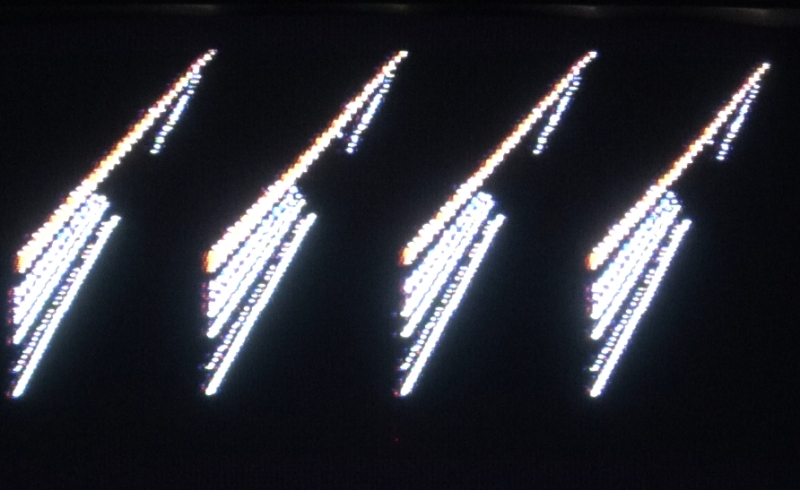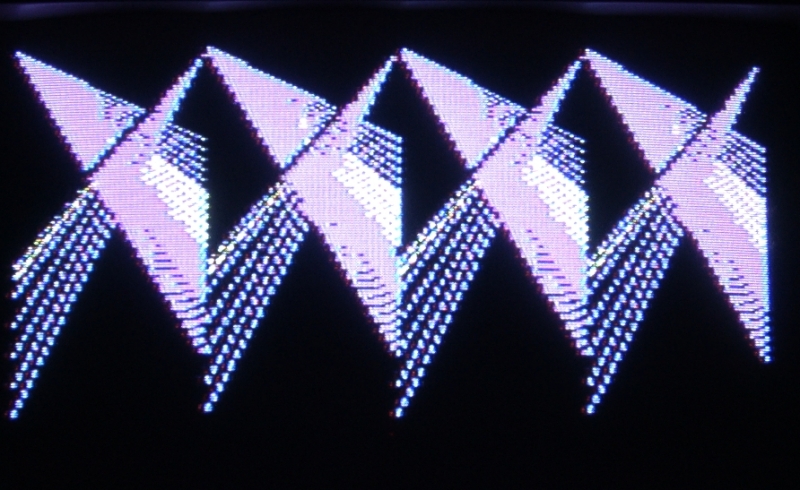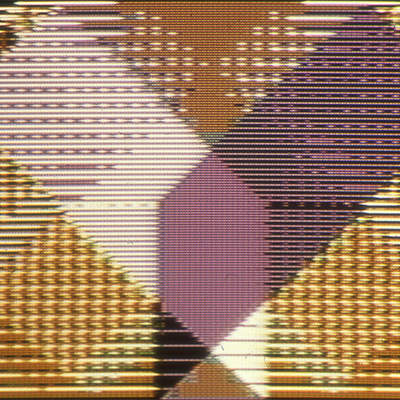First Publication of Franke’s Basic Code ZENTRUM from 1982
On November 21, the foundation publishes a historical program code by Herbert W. Franke for the first time. The BASIC-code Zentrum still runs on classic apple II computers today, but it is not yet executable on the Internet. The internationally renowned artist Aaron Penne has now translated the program as closely as possible to the original for the Bockchain so that it can also be viewed on the web – a project in collaboration with the Foundation, expanded art and Proof. The original transcript of the code center can be seen at the end of the message.


Herbert W. Franke’s Art 2.0 – Interview with Susanne Paech by Anika Meier
Franke developed the code of Zentrum for his first computer, an apple II, as early as 1982. Franke did not use the apple monitor for this, but connected it to a conventional TV receiver. Zentrum is one of the first programmes that the computer artist coded himself using the simple programming language Basic, after he was still designing flow charts for proprietary computing systems in the 1970s, which could then be implemented by a programmer for the respective systems. Here is an example of the computer art series Farbraster (Color Grids), which was created in 1973 in the medical technology research department of Siemens.
The code of Zentrum was implemented for this project by the well-known crypto artist Aaron Penne strictly according to the original for Web 3.0 and for this also simulated the aesthetics of the surface of a tube monitor. It should be noted that Franke was able to create a different colour scheme by connecting a television instead of the original apple monitor. This is because it was not possible to change the contrast on the apple device. The colours on this monitor therefore appeared extremely saturated. Franke, who did not even know this output device at the time, worked with the contrast setting with paler colours, which is documented on the basis of historical video clip recordings and photos, which was also taken into account in the recoding.
For the program, Franke had to make do in the early 1980s with the low computing capacity that a home computer offered at the time. Despite this limitation, however, it was already important to him to develop moving sequences for the first programmes for the apple II. As an artist of the generative abstract, he considered movement – as well as the possibility of combining it with music and using it interactively – to be a pioneering innovation of digital technology in the field of visual art. That is why he wanted to push these elements in his works from the very beginning.
In a manuscript from 1984, an article for one of the earliest home computer magazines, Franke, the visionary, looks to the future: ” Certainly not everything that is created with the help of computer programmes has artistic value, but why should something not one day emerge from these simple beginnings that is on a par with the great works of painting.”






Franke was aware that such PC programs were the beginning of a future far-reaching development for art. He wanted to be actively involved on the front lines of a development that would open up this potential for art. Some of the tricks he used in the early days of PC programming to develop creative codes even with these extremely limited framework conditions are presented in this article for amateur programmers. He describes how computing time can be saved with simple elements thanks to algorithmically comprehensible pattern recognition of symmetries and repetitions that can be combined in different ways, and how visually appealing results are still possible. Franke also shows that these algorithms can be combined with computational time-saving random generators to achieve astonishing aesthetic results. The artist also deliberately used moiré effects caused by the technology of cathode ray tube monitors, colour overlays that actually appear as artefacts on the screen due to overlapping pixels. It is important to know that the first home computers offered a palette of only 16 colours, which could apparently be enlarged by the moiré effect. Last, but not least, the pioneer described how three-dimensional mathematical formulae could also be used for the aesthetic visualisation of mathematical relationships by encoding their third dimension with colours: Franke also used the principle for the famous Math Art series, which was created between 1980 and 1995. Last, but not least: A passage in the article is also devoted to animation, to the question of what programming tricks there are, i.e., with which images can be dynamically superimposed.






Incidentally, the manuscript “Computer Art from the Home Computer” is part of the collection that has been digitised at the ZKM 2023 and will also be publicly accessible in the near future. The article was also translated into English by the foundation on the occasion of the NFT drop of Zentrum.
Part of the foundation’s proceeds from the NFT of Zentrum will be used for the eBook publishing of the science fiction edition of Herbert W. Franke’s works, which is planned for 2024. Another part will be used for the realisation of an international symposium about the history of generative art in May 2024, the 96th birthday of the artist, who died in 2022.
Here is the transcript of the original historic Basic code of Zentrum from 1982:
50 REM PROGRAMM “ZENTRUM”
80 HOME
90 W = – 16336
100 HGR2
110 HCOLOR= 2: GOTO 125
120 HCOLOR= INT ( RND (1) * 5) + 1
125 FOR M = 1 TO 50
126 SOUND = PEEK (W)
127 FOR PAUSE = 1 TO 10: NEXT PAUSE
128 NEXT M
130 N = 0
150 A = INT ( RND (1) * 279)
160 B = INT ( RND (1) * 279)
260 E = INT ( RND (1) * 2) + 2
262 X1 = A + N * E
263 Y1 = 279 – A – N * E
264 Z1 = 95 + N * E
265 Z2 = 95 – N * E
350 IF X1 > 278 THEN GOTO 120
355 IF X1 < 1 THEN GOTO 12

